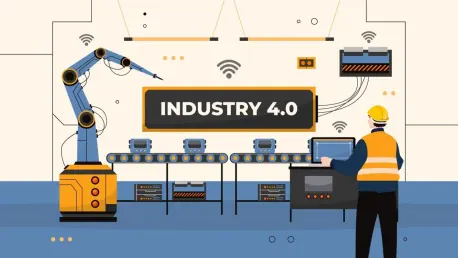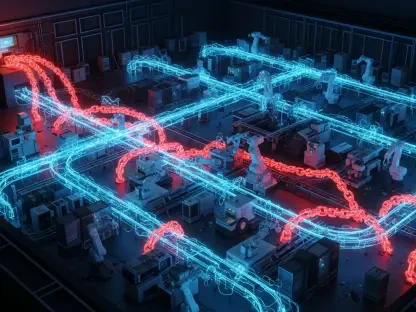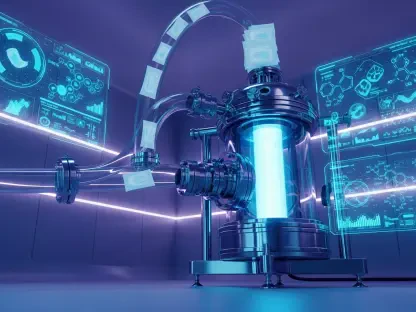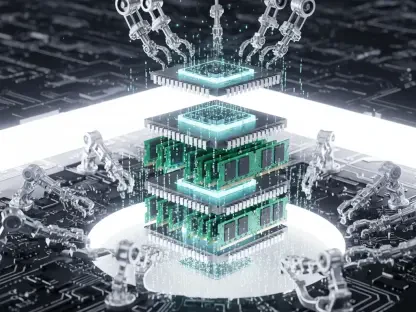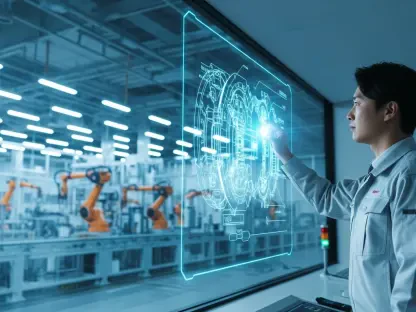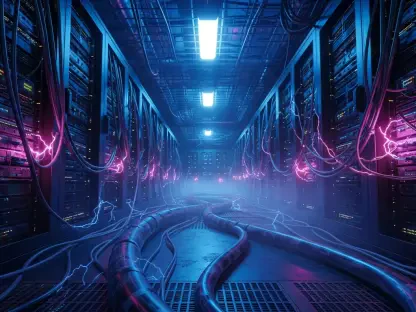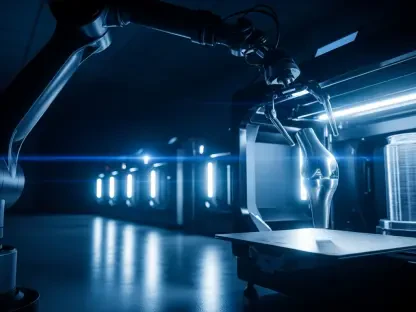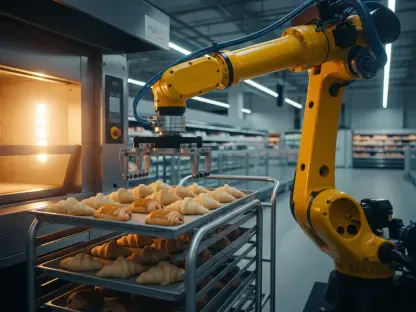The industrial revolution known as Industry 4.0 has dramatically transformed various sectors, including manufacturing, transportation, and energy production through the implementation of advanced automation technologies. This transformation has not only resulted in enhanced efficiency and productivity but also introduced a critical scenario for cybersecurity challenges. As digital technologies increasingly merge with traditional industrial processes, understanding and mitigating these cybersecurity risks is paramount in maintaining operational continuity.
Industry 4.0 and ICS Overview
In the era of Industry 4.0, Industrial Control Systems (ICS) such as Supervisory Control and Data Acquisition (SCADA), Distributed Control Systems (DCS), and Programmable Logic Controllers (PLC) have become fundamental to ensuring efficient production and seamless operation in various industries. These systems manage and monitor complex physical processes, making them essential components of modern industrial infrastructure.
However, the fusion of Information Technology (IT) and Operational Technology (OT) within these ICS frameworks has led to heightened vulnerabilities. While ICS traditionally operated in isolated environments, the integration of interconnected digital networks has increased the potential for cyber threats. This transition underscores the urgency of addressing cybersecurity measures to protect these critical systems from potential disruptions and breaches.
The Expanding Threat Landscape
As ICS become more intertwined with digital networks, they are exposed to cyber threats similar to those targeting traditional IT systems. Cyber-attacks such as malware, ransomware, and Advanced Persistent Threats (APTs) have become prevalent hazards that endanger the operational integrity of industrial automation systems. The increased connectivity brings efficiency gains but also elevates the risk profile for these critical infrastructures.
Historic cyber-attacks like Stuxnet, Industroyer, and Triton serve as stark reminders of the severe physical and operational impacts resulting from cyber threats. These incidents illustrate the potential devastation that cyber-attacks can impose on industrial settings, including causing significant downtime, compromising safety, and disrupting essential services. As the technology landscape evolves, so does the sophistication and frequency of such cyber threats, emphasizing the need for robust cybersecurity frameworks in industrial automation.
Real-World Security Incidents
The surge in cyber-attacks targeting industrial automation systems is a growing concern, with adversaries exploiting inherent vulnerabilities such as outdated software and misconfigured network settings. U.S. utility providers have reported a marked increase in cyber-attacks, often leveraging outdated systems and rapid digitalization processes. Such incidents underscore the pressing need to adopt and reinforce security measures within these industrial frameworks.
A noted example is the ransomware attack on KNP, a logistics firm that suffered substantial financial and operational repercussions. This incident highlights the real-world consequences of cybersecurity breaches and the importance of timely and effective cybersecurity practices. In response to the rising threat landscape, regulatory bodies like the TSA have introduced stringent cybersecurity regulations for critical infrastructure sectors, including pipelines and railroads. These regulations emphasize the need for prompt cyber-attack notifications and regular assessments, reinforcing the critical role of robust security measures in protecting industrial operations.
Key Vulnerabilities in ICS
Industrial automation systems are particularly susceptible to various vulnerabilities that can be exploited by cyber attackers. One primary concern is the reliance on outdated technologies that lack modern security features, making them easy targets for sophisticated cyber threats. Additionally, the insufficient separation between IT and OT networks creates a critical vulnerability, as a breach in one can quickly cascade and compromise critical operational infrastructure.
The heavy dependence on external suppliers for essential services such as equipment, software support, and maintenance introduces further vulnerabilities. Cyber weaknesses within supplier ecosystems can directly impact the security and functionality of industrial systems. Furthermore, human factors, including poor security practices like the use of weak passwords and increased susceptibility to phishing attacks, significantly contribute to the risks facing ICS. Effective cybersecurity strategies must address these multifaceted vulnerabilities to safeguard against potential cyber-attacks comprehensively.
Best Practices for Securing ICS
To mitigate the identified vulnerabilities, implementing comprehensive cybersecurity measures is imperative. Regularly conducting risk assessments allows for the identification and evaluation of potential threats to ICS operations, facilitating targeted preventive strategies. Network segmentation is a critical tactic that helps prevent breaches from spreading across interconnected systems, thereby enhancing overall security.
Adopting the principle of least privilege is another best practice that involves limiting user and system access to only the minimum necessary for functionality. This approach minimizes the impact of compromised accounts. Keeping systems updated with the latest software versions and firmware is essential to address security issues proactively. Additionally, ongoing employee training on cybersecurity best practices, including phishing detection and robust password management, is vital in fostering a security-aware workforce that can act as a frontline defense against cyber threats.
Incident Response and Monitoring
Preparation for potential cyber threats requires the development and regular testing of comprehensive incident response plans. These plans should outline clear steps, effective communication strategies, and detailed recovery instructions to ensure swift and effective responses when cyber incidents occur. Being prepared with a well-defined response plan can significantly mitigate the impact of a cyber-attack on industrial operations.
Integrating intrusion detection technologies alongside audit systems is crucial for real-time monitoring of anomalous activities. These technologies can provide valuable insights into potential threats, enabling timely responses to ongoing cyber-attacks and reducing the possible damages. Effective incident response and monitoring practices are foundational elements in the overall strategy to secure industrial automation systems against evolving cyber threats.
International Standards
Adhering to international cybersecurity standards is a fundamental aspect of protecting Industrial Automation and Control Systems. The IEC 62443 series, for example, offers a comprehensive framework tailored for security in industrial environments. This series covers risk assessments, component requirements, and system design principles that collectively enhance the overall security posture of industrial systems.
Other globally recognized frameworks, such as the NIST Cybersecurity Framework (CSF) and ISO/IEC 27001, provide essential tools for developing secure industrial infrastructures. These frameworks facilitate the adoption of established security methodologies, ensuring that industries can implement standardized and effective cybersecurity measures. Compliance with these international standards is critical in creating robust defenses against increasing cyber threats in industrial automation.
Future-Proofing Security
As new technologies such as IoT, cloud computing, and AI-driven automation become integral to industrial processes, they introduce additional vulnerabilities that must be addressed with robust security measures. Essential steps include encrypting data, implementing access controls, and designing segmented network architectures to bolster the security of modern industrial systems.
The continuous evolution of cyber threats requires industries to stay ahead by enhancing their cybersecurity measures. Cybercriminals are leveraging advanced techniques like AI-powered malware and deep fake social engineering to launch more sophisticated and targeted attacks. Embracing proactive measures such as real-time surveillance, threat intelligence sharing, and adaptive incident response strategies is vital in maintaining resilience against these evolving threats.
Regulatory Compliance
Staying compliant with evolving global cybersecurity regulations is an essential aspect of protecting industrial automation systems. Regulations such as the NIS2 Directive for EU members and critical infrastructure cybersecurity rules in the U.S. are instrumental in shaping the mandatory standards for cybersecurity practices. Adherence to these regulations not only prevents potential violations but also ensures consistent and comprehensive protection against cyber threats.
Keeping abreast of regulatory changes and incorporating compliant security practices enable industries to maintain operational continuity and safeguard critical infrastructure effectively. Proactive compliance protects against both regulatory repercussions and the numerous risks associated with cyber threats, thereby enhancing the overall cybersecurity posture of industrial automation systems.
Moving Forward
The industrial revolution, often referred to as Industry 4.0, has profoundly transformed various sectors, such as manufacturing, transportation, and energy production, by adopting advanced automation technologies. This transformation has led to significant enhancements in efficiency and productivity, but it also brings forth critical cybersecurity challenges.
As digital technologies intersect more deeply with traditional industrial processes, understanding and addressing cybersecurity risks has become essential for maintaining operational continuity. Emerging technologies like the Internet of Things (IoT), artificial intelligence (AI), and big data analytics are revolutionizing how industries operate, but they also create new vulnerabilities. Cyberattacks on industrial systems can lead to severe consequences, including production halts, safety hazards, and financial loss.
To mitigate these risks, companies must invest in robust cybersecurity measures, including regular updates to software and hardware, employee training, and the implementation of advanced threat detection systems. Collaboration between industry leaders, cybersecurity experts, and government agencies is also crucial in developing comprehensive strategies to safeguard critical infrastructure.
In conclusion, while Industry 4.0 offers numerous opportunities for growth and innovation, it is imperative to address the accompanying cybersecurity risks to ensure the safety, reliability, and continuous operation of industrial systems.
